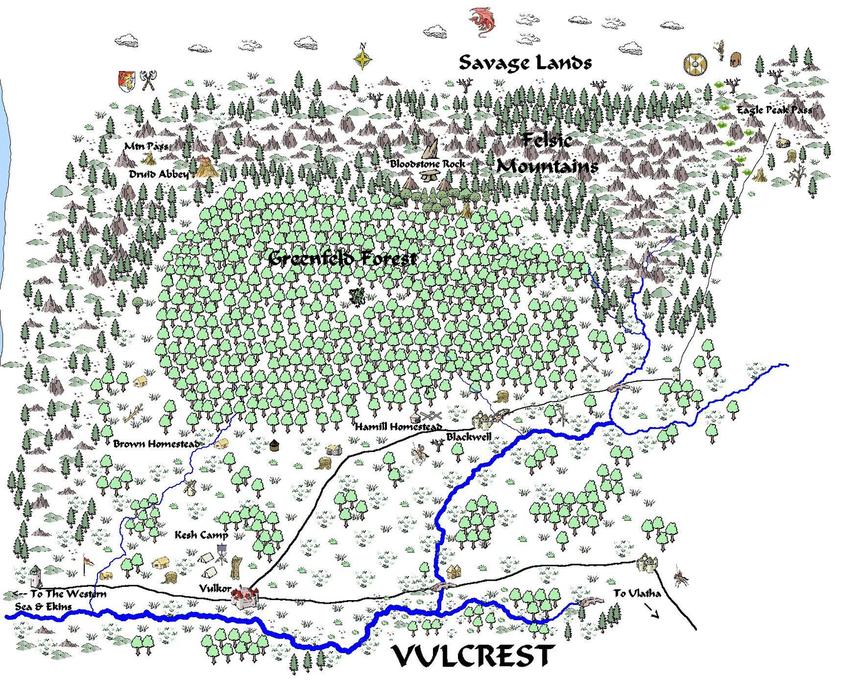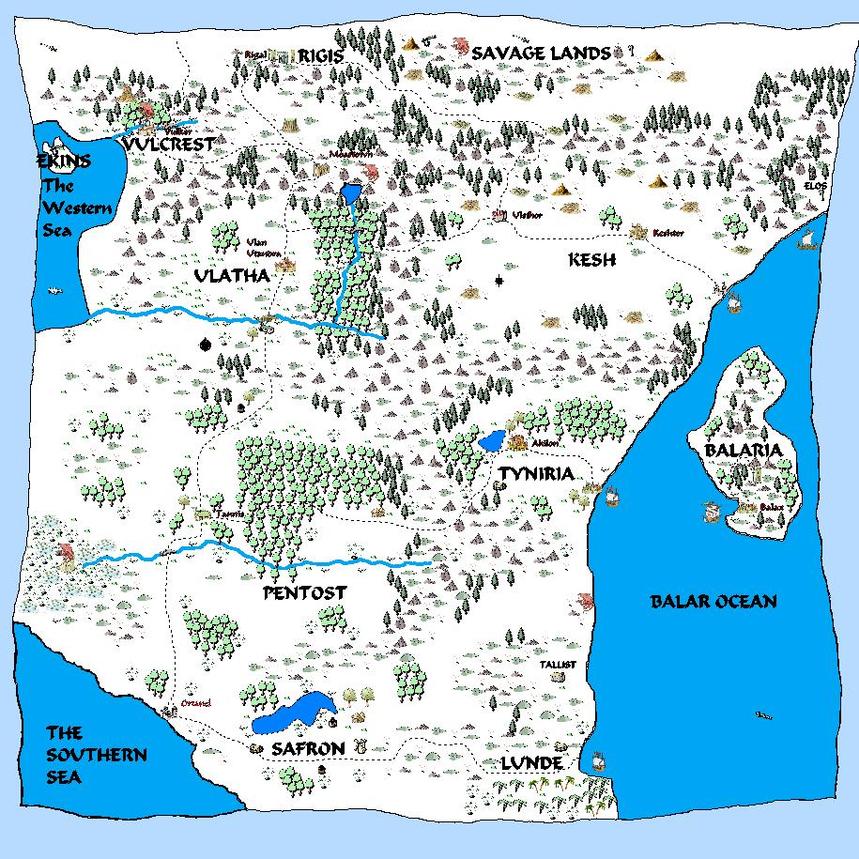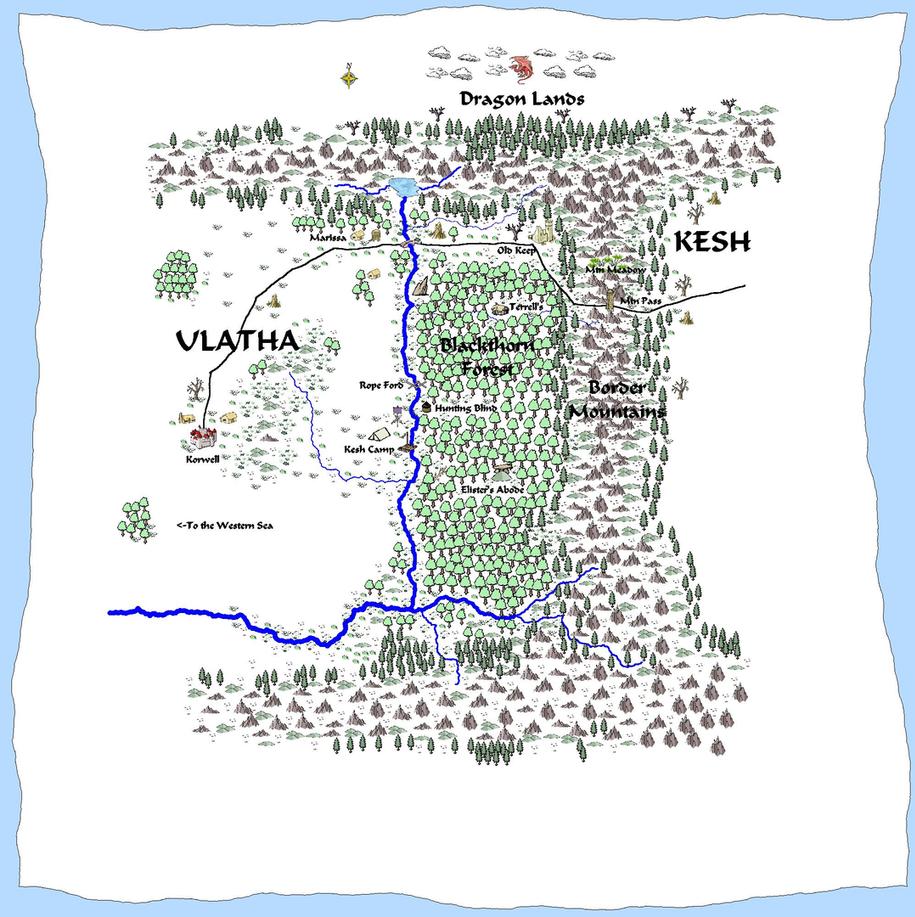Claire Agon is the second planet orbiting Tau Ceti, located just less than twelve light years from our own planet Earth. It circles its star in the habitable zone, just over two-thirds of one AU, or astronomical unit, which is the distance of Earth from the sun. This places it in orbit about the same distance around Tau Ceti as Venus is to Sol. It has an atmosphere similar to Earth’s, but it is different in composition, because the inhabitants of Claire Agon are silicon-based life forms, not carbon-based as on our planet.
Claire Agon has two companion moons about half the size of Earth’s moon, but circling the planet much closer, four times closer, in fact. The two moons are tidally locked to Claire Agon, each showing the same face to the planet. The two moons in the common tongue are called Tira and Sara, in that order. Tira rises first, followed a few hours later by Sara. Both moons are named for Claire Agon’s daughters in Agonian mythos. Lunar eclipses are not uncommon due to the close orbits of the two moons to the planet, and a full lunar cycle occurs approximately every nine days. Both moons are much like small Agonian worlds, and their blue, green, and white cloud-tipped atmospheres can clearly be seen from the surface of Agon.
Claire Agon, or simply Agon in the common tongue, isn’t the only planet circling Tau Ceti. Recently on Earth, astronomers have detected up to five planets circling the class G star, which is similar in type to our own Sol, but it masses only four-fifths that of our own sun. The astronomers are almost correct insomuch as the system actually has six planets. One planet, however, they could not have imagined; it circles Tau Ceti in an elliptical and eccentric orbit, tilted at thirty degrees above the solar plane. That planet is the size of our own Neptune, but instead of being a gaseous planet, it is a rocky planet, with a huge mass relative to Earth and an atmosphere and magnetosphere in a class unto itself. Agonians call this planet “Dor Akun,” or “Death World,” though the term “Father of Death” is also used, depending on the culture.
Dor Akun orbits Tau Ceti once every two hundred years, and when it approaches perihelion, or its closest approach to the star, it actually comes within the orbit of Claire Agon. In addition to this, Claire Agon is also pulled by the gravitational force of Dor Akun, to the point that it, too, reaches perihelion and does so at the same time as its bigger mate, Dor Akun. During this time Dor Akun is a mere million miles from Claire Agon, and it reaches perihelion exactly on the solar plane where Agon orbits Tau Ceti, thus eclipsing Agon as it transits from perihelion and begins its slow, arduous journey up and back to its aphelion, to begin the cycle all over again.
The eclipse lasts an entire Agonian month, and its tidal forces pull mercilessly on the smaller Agon, flexing its crust and creating huge tides and displacements of waters both great and small. Agon is cast into a cold, dark, month-long isolation, suffering immense damage to life there.
Fortunately for those who live on Agon, the event occurs only once every two hundred orbits of Agon and once every orbit of Dor Akun. Where the two planets actually cross orbits, the larger planet, Dor Akun, is inclined by several million miles, and so the paths of the two planets never cross.
Some Earth-based scientists, if they could witness the odd but regular orbits of Agon and Akun, might conclude that the event will eventually decay the Agonian orbit to the point where it either degrades into Tau Ceti, in a spectacular but deadly spectacle of death, or, more likely, on one pass, it will be captured by Dor Akun and her orbit will take her into the deeper regions of Tau Ceti space, where it is cold and dark and eventually even silicon-based life would freeze to death.
This, however, isn’t the only thing that occurs during the transit event. On Earth, we are protected from radioactive particles by its magnetosphere. In Agon the sphere is weaker and charged particles rain down from Tau Ceti yearly, but during the transit event the great magnetosphere of Dor Akun acts much like a wing does on a modern-day airplane as it slices through the air; it funnels a steady stream of highly charged particles from the local star around itself and onto the surface of Claire Agon every two centuries. The phenomenon causes mutations in the silicon-based life forms of Claire Agon, and so evolution there takes place at a much more rapid pace than it does on Earth.
Such are the science of Claire Agon and its dance of death and change with its bigger mate, Dor Akun, all around a nondescript class G spectral star located not very far from our own sun. Thus magic is created and dragons are born.
RANGER RISING MAP
GREEN DRAGON MAP

WHITE DRAGON MAP

CLAIRE-AGON MAP, CIRCA 1,000 YEARS AGO

